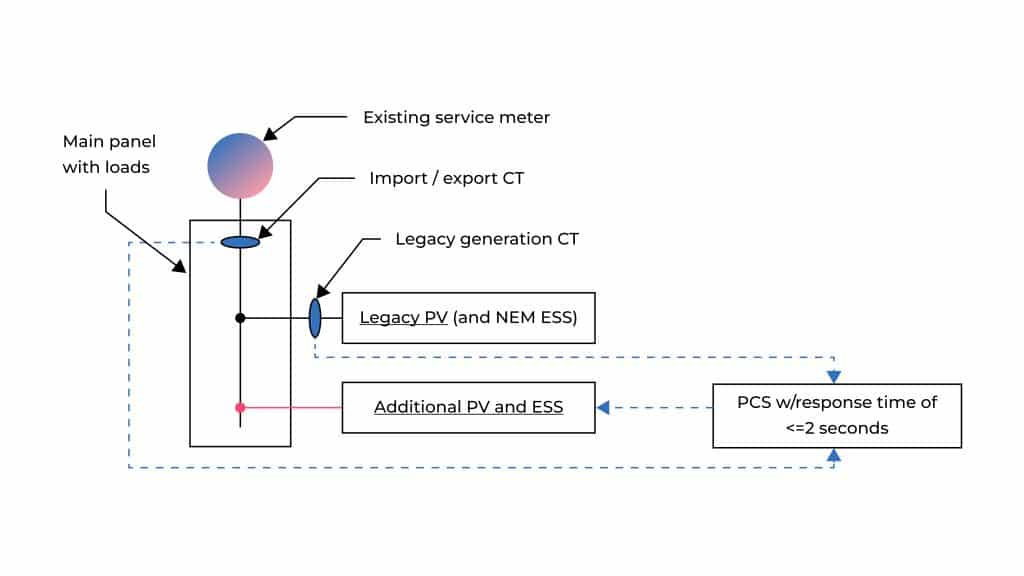The primary motive for homeowners to go solar is to reduce utility bills and promote grid independence. With net metering schemes, they save money when the solar system offsets total home consumption. But what happens when the homeowner’s energy consumption increases over time?
Reasons for an increase in home consumption and impact
Changing lifestyles influence how energy is consumed. One common example is the switch to an electric vehicle (EV), which requires a dedicated EV charging station. Additionally, many homeowners are switching to more efficient electric heat pumps over traditional heating sources. Considering future purchases or lifestyle changes complicates solar system modeling and may lead to higher electricity bills for homeowners.
Add more panels to an existing solar system
Expanding solar systems is a way to meet the increase in consumption. Fortunately, there are many cost-effective ways to grow a solar system. However, keep in mind the following considerations for system expansion:
Roof space
Ensure there is enough space on the roof for new panels. If not, consider a carport or ground mount system. Aim to add panels that match the appearance of existing panels.
Panels and inverters
Expanding microinverter systems is more manageable since a microinverter is paired with a panel and works independently from the rest of the system. Expanding string inverter-based systems might result in sizing challenges and require inverter upgrades. However, panels with similar wattage and electrical characteristics will minimize electrical losses.
Age of the existing system
If the solar system is older than 10-15 years, starting over and replacing the existing system might make more financial sense. Panels degrade over time and will underproduce compared to their rated capacity.
Metering considerations and surplus compensation
Carefully inspect the utility requirements for the expansion system. Utilities in certain states (California, Arizona, Hawaii, and Nevada) do not provide favorable retail metering benefits for expansion systems. The compensation for the energy exported from an expansion system can be significantly reduced or even nonexistent compared to the existing system. Policies change over time, and expansion systems might result in homes losing the grandfathered status of net metering schemes.
Installation and hardware
Sometimes, the new system might need to be connected to a different alternating current (AC) system (combiner box and Main Service Panel connection). Some utilities may require an additional meter (NGOM) to monitor the energy exported from an expansion system. Additional CTs for power control systems (PCS) and monitoring purposes might also be necessary.
Important note on California and system expansion
California’s market transitioned to a net billing tariff (NEM 3.0) policy in 2023. Retaining or grandfathering the previous net metering schemes (NEM 1.0 or NEM 2.0) requires a zero-export PCS limit for the expansion system. All three IOUs deem CALSSA’s “Configuration 1” acceptable using non-export PCS on the new system (sample system below).

Add a battery for heavy evening consumption
Regions where utilities do not favor passing net metering benefits (such as California) to expansion systems will benefit from adding batteries. Homes with heavy evening consumption need batteries to minimize utility bills and grid dependency.
Conclusion and next steps
Expanding a solar system with additional panels and batteries is a practical solution to accommodate increased energy consumption. To get started:
- Evaluate the current system’s capacity, roof space, and utility regulations.
- Use Solargraf’s modeling capabilities to guide you through the expansion process, ensuring the system efficiently meets the homeowner’s energy needs.
- Discuss options with your clients and plan the best approach for their homes.
For detailed instructions on creating a proposal for an expansion system, refer to our Create a System Expansion Project guide.

Schedule a demo to learn more.


 United States
United States Germany/Austria
Germany/Austria Brazil
Brazil Netherlands
Netherlands